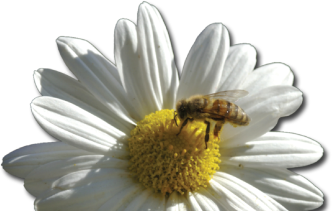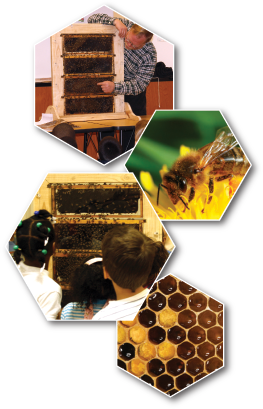What does a typical presentation look like?
What will your students see?
- Observation hive with live bees showing four stages of hive life.
- Beekeeping tools including
- Beekeeper's suit/hat/veil
- Frames
- Smoker
- Products of the hive including:
- Honey
- Wax
- Pollen
What will your students be taught?
- Life cycle of bees
- How a hive works...jobs of each of the classes of bees
- Safety in living with bees
- Why bees are important to food production/pollination
- The "Killer Bee" - Myth vs. Truth
How long is a presentation?
- Generally a session for grades 2 or 3 lasts approximately 20 minutes, but this time can be adjusted to fit individual school schedules. Following the presentation, students are allowed time to examine items from the presentation and search the "hive" for the queen.
- More advanced classes can receive a longer presentation depending on the schedule for the day and how the school chooses to break up the periods.
What other activities will your students experience?
- Each student will be allowed to closely examine the observation hive to see bees "face-to-face"
- Beekeeping suits will be available for students to try on (depending on the schedule)
- Equipment used by beekeepers will be available for students to handle
- Students will receive the opportunity to taste honey
After the presentation how can teachers continue the lesson in their classrooms?
- Materials will be given to each school and classroom for use in follow-up teaching.
- Each campus will receive a DVD and workbook from the National Honey Board that will reinforce the teaching given during the presentation. The pages from the workbook may be reproduced for distribution to students.
- Each classroom will also be given a packet of materials with grade-specific blackline masters of activities including word puzzles, comparison artwork and suggested journal entries that will allow the teacher to ask questions and even give tests to judge the comprehension level of the students.


